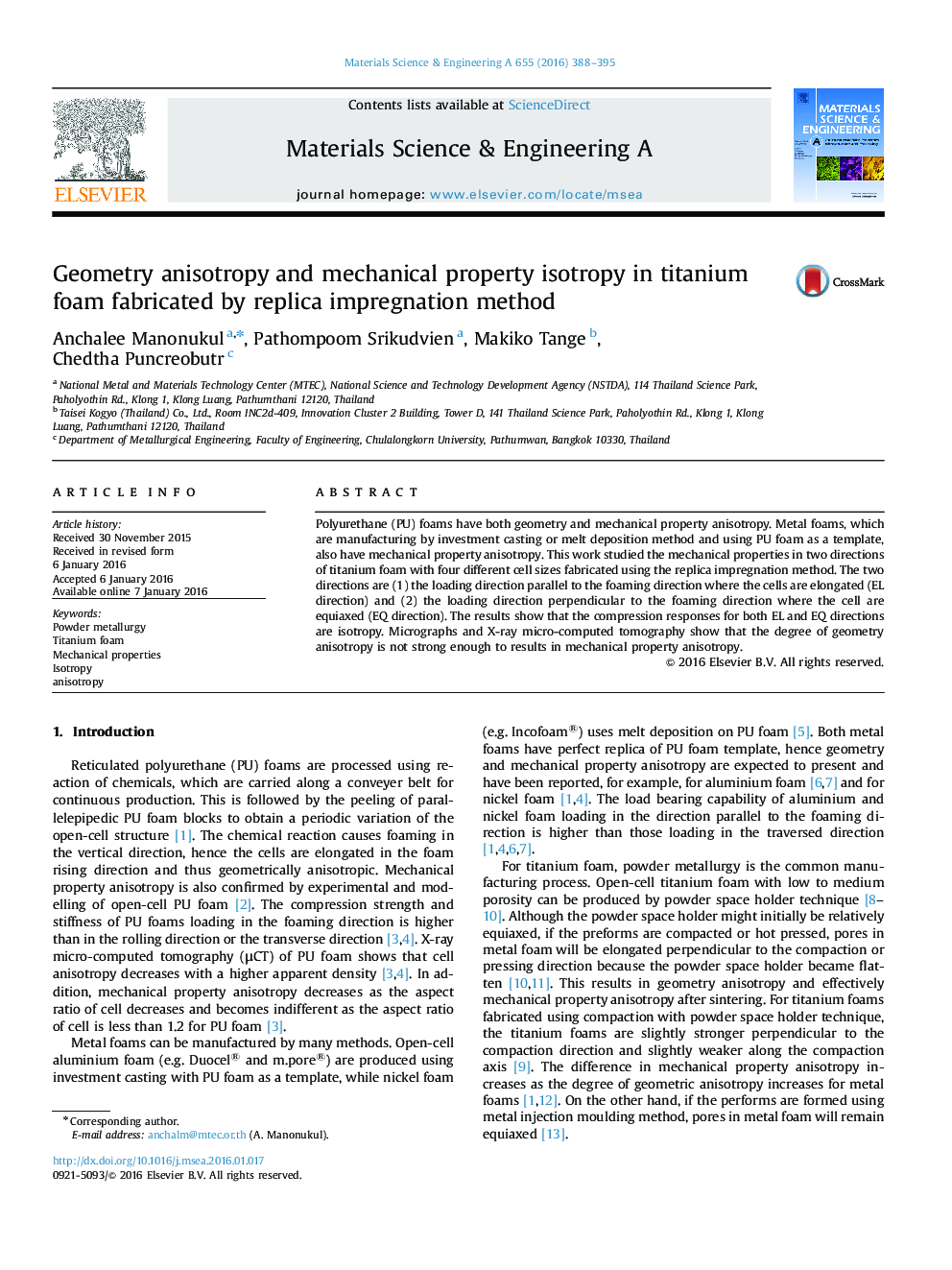| Article ID | Journal | Published Year | Pages | File Type |
|---|---|---|---|---|
| 1573710 | Materials Science and Engineering: A | 2016 | 8 Pages |
Abstract
Polyurethane (PU) foams have both geometry and mechanical property anisotropy. Metal foams, which are manufacturing by investment casting or melt deposition method and using PU foam as a template, also have mechanical property anisotropy. This work studied the mechanical properties in two directions of titanium foam with four different cell sizes fabricated using the replica impregnation method. The two directions are (1) the loading direction parallel to the foaming direction where the cells are elongated (EL direction) and (2) the loading direction perpendicular to the foaming direction where the cell are equiaxed (EQ direction). The results show that the compression responses for both EL and EQ directions are isotropy. Micrographs and X-ray micro-computed tomography show that the degree of geometry anisotropy is not strong enough to results in mechanical property anisotropy.
Related Topics
Physical Sciences and Engineering
Materials Science
Materials Science (General)
Authors
Anchalee Manonukul, Pathompoom Srikudvien, Makiko Tange, Chedtha Puncreobutr,
